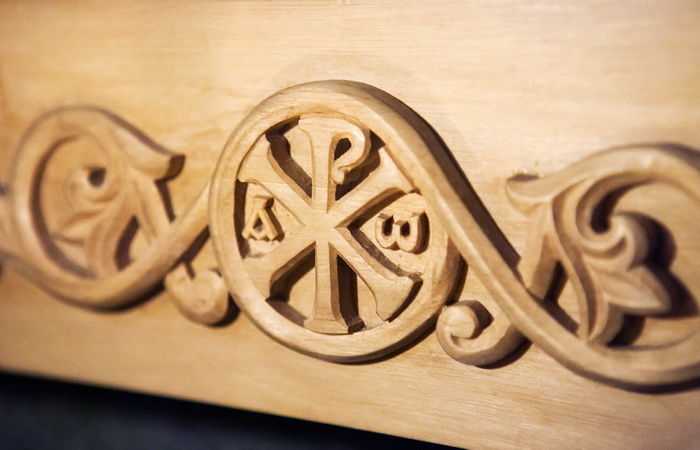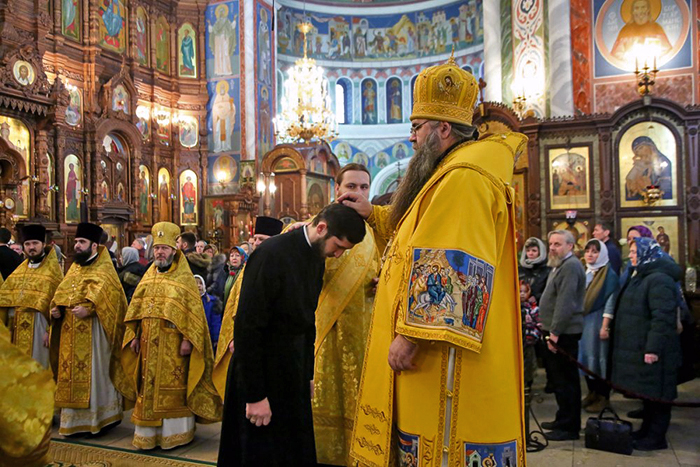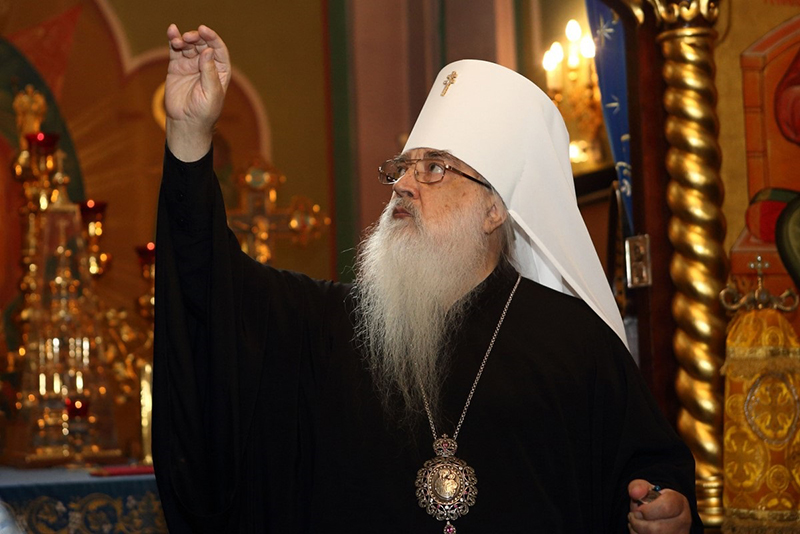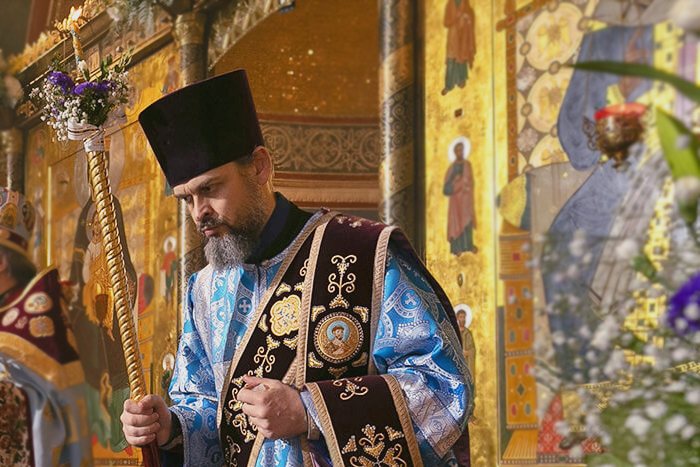
Over time, the Russian Orthodox Church has developed a system of special awards for the clergy. These awards are designed to recognize the zealous service of clergy for the benefit of the Church and their spiritual experience in the eyes of the faithful, testifying to their worthy service. We have already talked about the ecclesiastical awards for priests (Part I and Part II). Here we will also talk about the church awards for deacons.
Double Orarion
The first award according to the ROC Awards Regulations is a double orarion. In contrast to the ordinary one, the front edge of the double orarion passes diagonally through the chest to the right thigh, then bands the back and goes down over the left shoulder. The double orarion is usually wider than the ordinary one; it has richer embroidery and the inscription “Holy, Holy, Holy”. There is a custom to embroider on the double orarions belonging to the protodeacon and archdeacon, not seven, but nine crosses, which symbolizes not the number of Sacraments, but the number of angelic ranks, which deacons are called to imitate. The double orarion as a decoration exists only in the Russian Church; in other local Churches, all deacons have the right to wear the double orarion. According to the latest provision on decorations, the double orarion is the first of them, but previously it was the other way around. Before the Russian Revolution only prominent archdeacons, such as the Protodeacon of the Resurrection Cathedral in New Jerusalem, had the right to wear the double orarion. Nowadays, this award is given by the ruling bishop no earlier than five years after the deacon’s ordination.
Kamilavka
Kamilavka (Greek: Καμελαύκιον) is a liturgical headdress of cylindrical shape, slightly expanding upwards, which is presented to priests and deacons as an award. The purple kamilavka is awarded by decree of His Holiness the Patriarch of Moscow and All Russia not earlier than ten years of serving with the double orarion, while in local churches of the Greek tradition kamilavka is an indispensable attribute of all clergy and is awarded on the day of consecration. There was a tradition in Russia of wearing skufias by all clerics, which covered the trimmed halo, but in time the Russian priests and deacons also began to wear kamilavka in imitation of the Greek clergy. In contrast to the Greeks, it was not black, but green, red, and purple. Kamilavkas are worn only during official church events, as well as at statutory moments of the divine service. The protodeacon who is entitled to wear the kamilavka also has the right to wear the violet skufia.
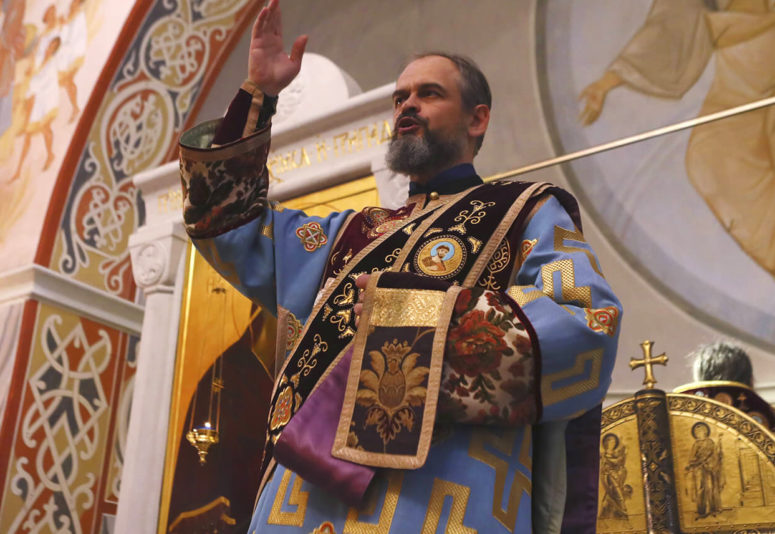
The Rank of a Protodeacon
In order to receive this rank, the deacon must have served for at least twenty years, as well as at least five years from the date of awarding the kamilavka. The word “protodeacon” comes from the Greek. Proto- means senior, and the deacon is a minister, an assistant. Originally, protodeacons were the senior deacons of the main church in the diocese, who were also direct assistants to the bishop. Historically, it was especially characteristic of the Church of Alexandria that the protodeacon was the assistant to the bishop, in charge of the church treasury, engaged in social service on behalf of the bishop, and, as a rule, it was he who subsequently occupied the pulpit after the death of the ruling bishop. However, the dignity of Protodeacon later became an award and ceased to imply special powers within the diocese. Elevation to the rank of protodeacon is carried out by the ruling bishop during the Little Entrance at the Divine Liturgy by a threefold sign of the cross, the laying on of hands and reading of a prayer, as well as by proclaiming Axios, which implies the consent and approval of the faithful people. The rank of the Protodeacon is not a sacred degree in relation to the Deacon, but a rank within the Deacon’s order.
Archdeacon
The rank of an Archdeacon is an award for a monk deacon (Hierodeacon). It is conferred by a special decree of the Patriarch of Moscow and All Russia for impeccable service to the Church regardless of the time of service and previous awards. Usually this rank is awarded to senior hierodeacons of important monasteries. As an exception, the dignity of archdeacon may be awarded to the senior deacon of the Patriarchal Cathedral. The first archdeacon in the history of the Orthodox Church was St. Stephen, the first martyr.
The Romanian Orthodox Church has a remarkable tradition that does not exist in the Russian Church, namely the granting of the right to wear a pectoral cross with decorations to a deacon who has worked especially hard for the Church. The deacon who receives this award, even if he is married, is called an archdeacon. However, the right of the deacon to wear the pectoral cross is limited to the church space and this award is not worn outside the divine service.


